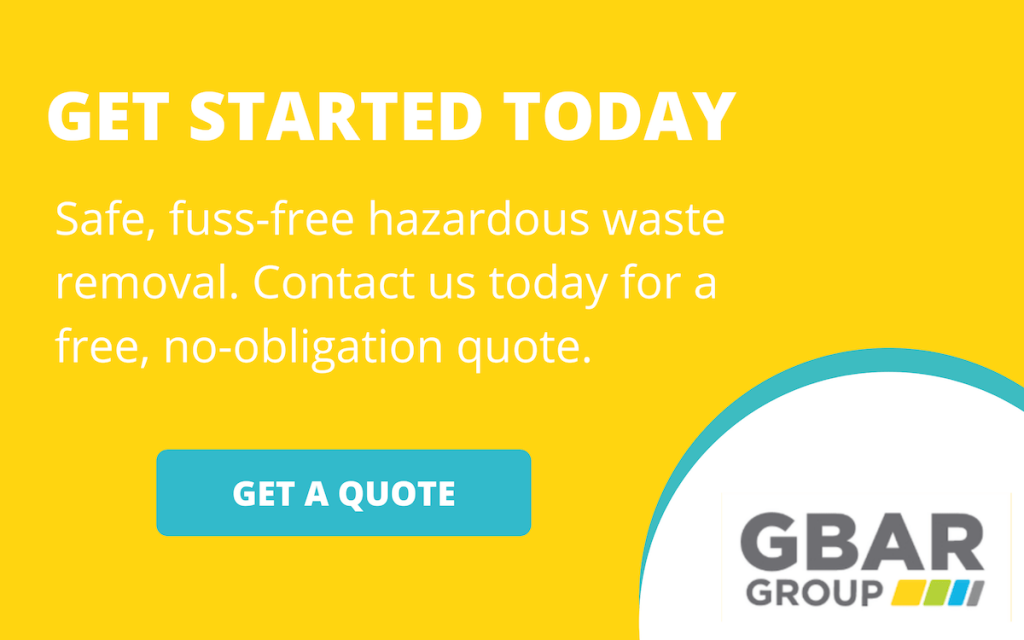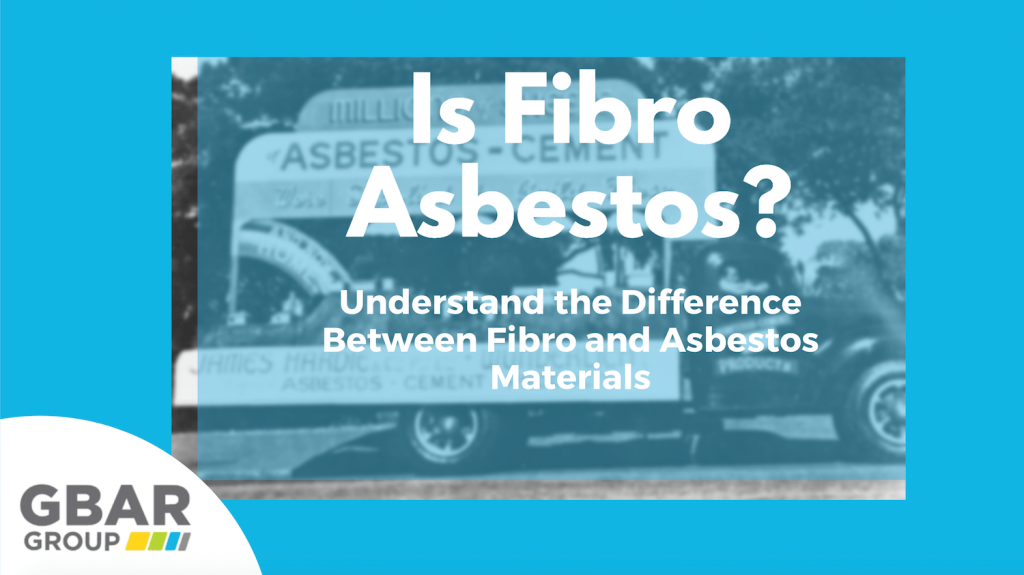
Is Fibro Asbestos? Does all fibro contain asbestos? The relationship between fibro and asbestos materials is fraught with confusion – let’s clear the air.
“Fibro” is a term abbreviated from “Fibrous Cement Sheeting”. The name derives from the process of using different fibrous materials to reinforce a thin cement sheet. Among these fibrous materials, asbestos was an ideal addition during its peak usage between the 1930s and 1990s. Despite common misconceptions, fibro and asbestos are not the same thing.
From the 1930s to the 1980s, asbestos was a common ingredient for fibro products. Using asbestos in fibrous sheeting allows for the asbestos fibres to provide the finished product with beneficial properties such as durability, versatility, malleability, and fireproofing. Predominantly manufactured and sold by James Hardie & Co. in Australia until the mid-1980s, fibro in all its forms was a very popular construction material.
In the 1940s, asbestos fibre reinforcing was an affordable alternative to bricks and timber cladding materials. Asbestos cement was very easy to make, and asbestos fibro versatility meant that house renovation and construction was something the average person could afford.
Fibro sheeting then became one of the most popular and efficient construction materials on the market. Ceilings, walls, and corrugated roofing were the most common uses for fibro flat sheet. Fibro cement sheeting with asbestos sold globally, but it was in Australia and New Zealand where the application was most widespread.
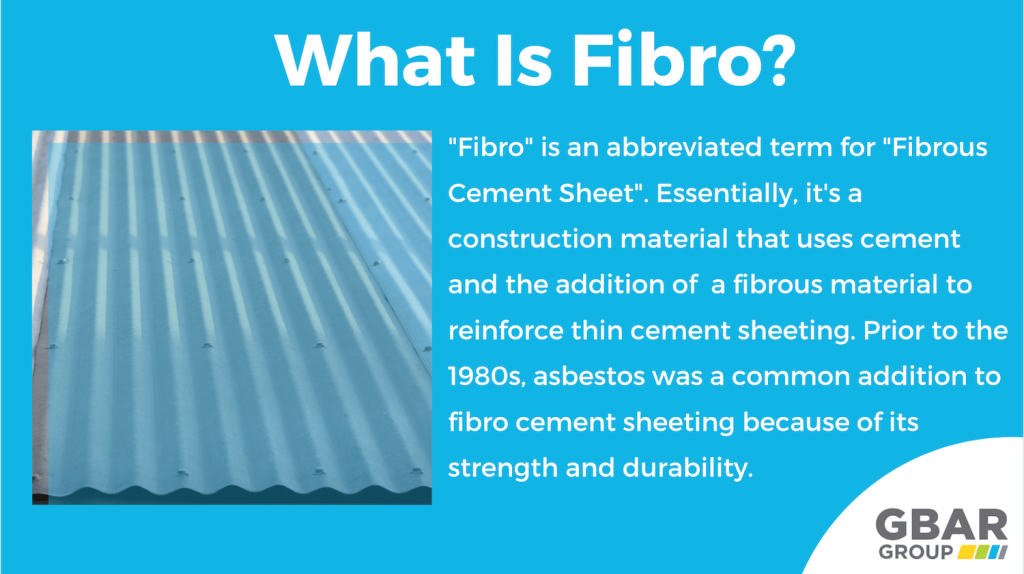
The Relationship Between Asbestos & Fibro
Despite asbestos being the favoured choice previously, not all fibro materials are made from asbestos today. The use of asbestos was phased out in Australia for all fibro building products in the 1980s, following the increasing awareness of asbestos-related illnesses. Nowadays, fibro is reinforced with cellulose rather than asbestos.
The extensive ban on asbestos includes all asbestos-containing materials, including in fibro cement materials. Fibro cement reinforced with asbestos experienced phasing out particularly early, as the materials were easily being affected by corrosion, which released asbestos fibres. Airborne fibres are incredibly hazardous to humans and asbestos exposure is directly linked to several life-threatening conditions included asbestosis, mesothelioma, and lung cancer.
It was these health concerns that saw the phasing out of asbestos fibro and eventual ban on all asbestos products. Fibre cement is still readily available, but with reinforcing fibres that substitute asbestos. The name “fibro” has remained and still applies to it for traditional reasons.
Is Fibro Sheeting Asbestos?
The most common uses for fibro flat sheets are ceilings, walls and corrugated roofing. The fibrolite cladding is cladding material that originally became popular because of its durability and how accessible and affordable it was in the 1940s.
Asbestos fibro sheeting was typically made for roofs, usually on industrial or farmyard buildings. If these buildings were built before asbestos fibro was phased out, the fibro sheeting was likely reinforced with asbestos fibres. If the fibro sheeting was constructed after 2003, it would not contain asbestos fibres. If you’re unsure about fibro sheeting materials, you can have them safely tested with an accredited asbestos lab technician.
Does Fibro Cement Contain Asbestos?
Asbestos cement products and materials are bonded cement-based products that were used in the construction and building industry. These products are a pure mixture of asbestos and cement and were commonly referred to as “fibro”.
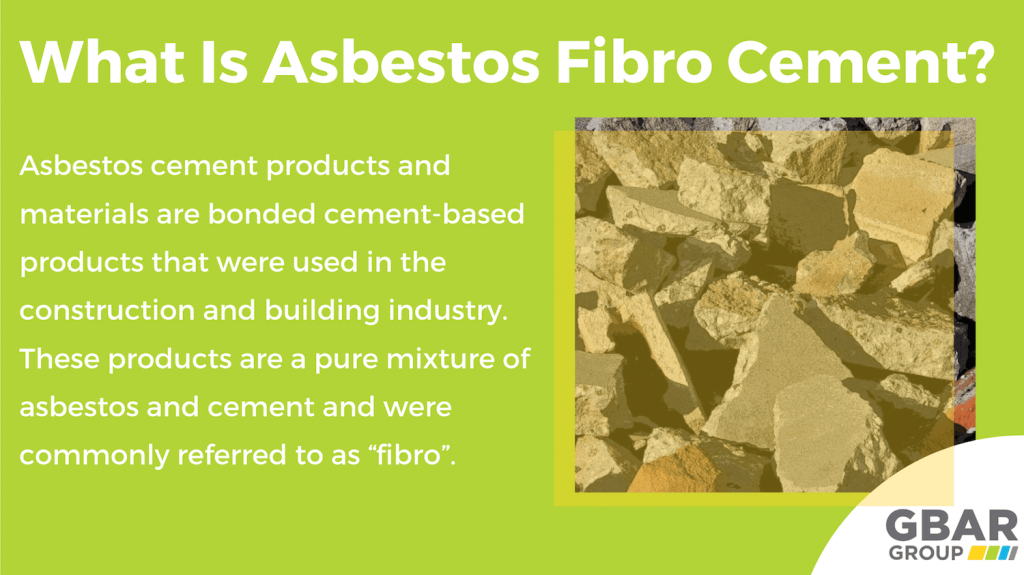
Some common asbestos cement building products include:
- Thin asbestos-cement flat sheet – used for interior and exterior wall and ceiling cladding. Also extensively used as waterproof panelling under tiles/flooring and behind wall tiles in wet areas such as bathrooms, laundries, and kitchens.
- Asbestos cement corrugated material – commonly used as roofing sheeting for both industrial and domestic purposes. This product has been phased out in favour of asbestos-free corrugated roofing materials.
- Compressed asbestos cement board – used as an outdoor walk and pathway material, for verandas, decks, and steps. Very hard, durable and heavy at about 2cm thick.
- Asbestos cement guttering, down pipes, roof ridges, fascias and cover stripping.
- Asbestos cement pipes for storm water, down pipes, irrigation, sewage and drinking water.
Fibro cement materials that were made and put in place prior to the early 2000s may contain asbestos. However, not all fibro cement products are asbestos-containing materials. If a house was built prior to 1990 and was constructed with fibro cement, it likely contains asbestos. If a homeowner has access to original construction documents for their property, it may or may not have information on whether asbestos was an ingredient in the fibro cement.
Fibro Cement asbestos materials were phased out in favour of other materials in the 1990s. Modern-day fibro cement products contain reinforcing safe alternatives to asbestos.
Is Fibro the Same as Asbestos?
A common misconception within the community is that fibro materials and asbestos are the same. The truth is, while asbestos was a common addition to fibro products for a long time, any fibro materials constructed today are asbestos-free.
Asbestos is a naturally occurring mineral that was favoured in the past because of its beneficial properties. The type of asbestos that was used for fibro products is classed as non-friable, as the cement acts as a seal and contains the asbestos fibres. If asbestos-containing fibro is disturbed, the asbestos fibres may be released, and the product would be converted to friable asbestos.
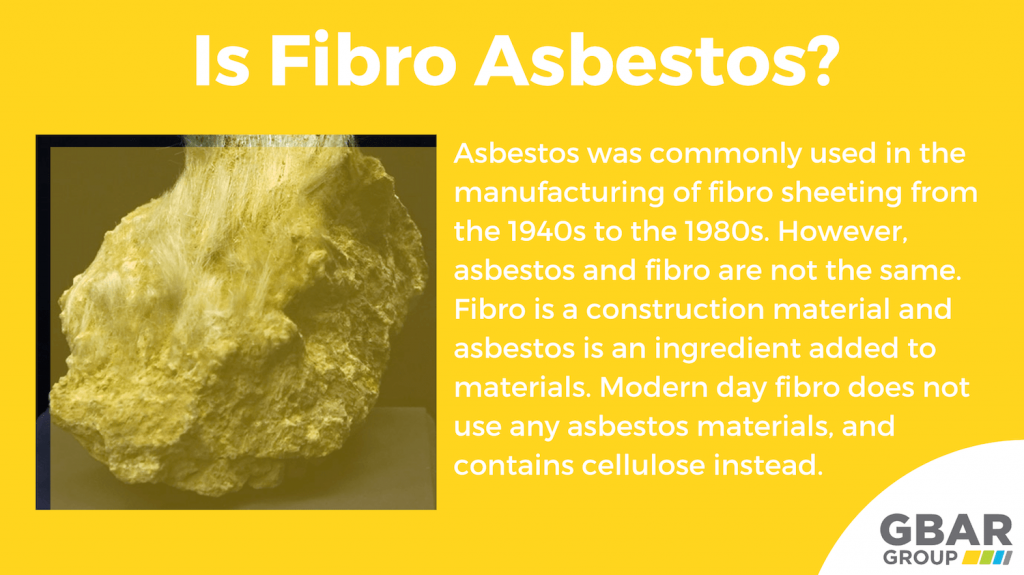
Fibro and asbestos are not the same. While most houses with older fibro products in situ will contain asbestos, fibro products may also contain alternatives to asbestos.
Asbestos cement and fibro products in good condition are not considered to be dangerous. It should be noted; however, that older fibro product that was constructed with asbestos may pose a threat. If fibro asbestos products become weathered, damaged, deteriorated or are being demolished, the asbestos fibres can contaminate the environment. Those in the immediate vicinity are at risk of asbestos exposure, which is directly linked to the development of asbestos-related diseases.
How to Tell If Fibro Contians Asbestos
It can be extremely challenging to identify asbestos due to the sheer number of products it was used in, and the nature of the fibres being so tiny. The best way to know whether fibro contains asbestos is to have an asbestos specialist inspect and test the materials for asbestos. Once the inspector has confirmed the presence of asbestos, you will need to have an assessment to see how much risk it poses, how it can be removed, and how much the process will cost.
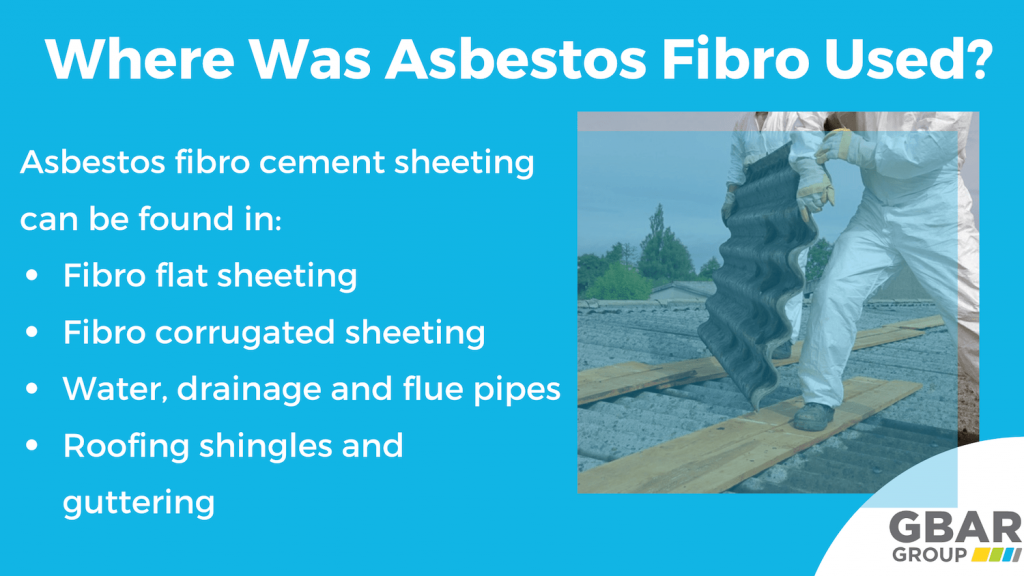
If a fibro product contains asbestos, it will need to be removed by a team of professionals. GBAR Group is the leading industry experts for hazardous material removal, disposal, and remediation. With over 15 years of experience in asbestos removal, GBAR’s specialists pride themselves on ensuring every job is in accordance with the appropriate state and federal regulations. We work with each client one on one, to deliver asbestos removal solutions in Sydney, Brisbane & the Gold Coast, that make each property safer for its inhabitants and your neighbours.
If your property contains older fibro materials that you suspect contain asbestos, get in touch with our team today. Don’t run the risk of asbestos exposure, keep your property safe and have it appropriately tested and removed by the professionals.
